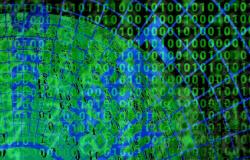How has Tech been Used for Good in Civil Society? We Asked the Experts

Technology has massive potential to deliver a positive impact on our society – when people are at the heart of it. Civil society organizations have been harnessing technology to create opportunities for sustainability and wellbeing for everyone.
Here are three examples of how they are using technology in meaningful and inspiring ways:
Marco Lambertini – Director-General, WWF International
WWF is on a mission to build an unstoppable movement for nature. We have only this generation to get the environment right, and technology is absolutely essential for driving change at the scale needed. We know we can’t achieve this alone, and we use the power of social media to inspire millions worldwide to take action.
At Davos, the World Economic Forum’s Global Shaper community, WWF and our partners launched Voice for the Planet, a global online action urging world leaders to push nature up the global agenda, and as Earth Hour rolled around the globe last month and landmarks switched off their lights in a show of solidarity, huge numbers of people voiced their demands for urgent action.
#EarthHour, #Connect2Earth and related hashtags trended in 26 countries as people across the globe generated over 2 billion digital impressions to show their concern for nature. Voice for the Planet will be presented to heads of state in 2020 when new global targets on nature will be set by governments across the world.
Jos Berens – Data Policy Officer, Centre for Humanitarian Data
When Cyclone Idai made landfall on the southeast coast of Africa in March 2019, relief teams on the ground and at the United Nations Office for the Coordination of Humanitarian Affairs (OCHA) leapt into action. To help illuminate the specific needs of the 2.6 million people affected across three countries, the OCHA Centre for Humanitarian Data partnered with OCHA Mozambique to create an interactive data visualization and facilitate data sharing through the Humanitarian Data eXchange (HDX).
The HDX team maintains a crisis page on HDX which houses key operational datasets on the Idai Response in support of the OCHA information management team in Beira. There are 43 datasets on the page. This data includes administrative boundaries, information on displaced people and their needs and details on the response.
Sharing data on HDX helped field personnel to significantly cut the time they would otherwise have spent on sharing data with partners. HDX continues to support the response with data cleaning, sharing and other data coordination activities.
Louise James – Managing Director, Accenture Development Partnerships
Momentum is building on digital technology's role. But sometimes there can be confusion about how to apply it and there if a risk of “missed use vs misuse”. Placing people at the heart of innovation and digital transformation is one way to ensure technology is fit for purpose and can truly change things for the better.
One of our recent examples was around financial inclusion in Southeast Asia, with a project that focused on microfinance innovation through customer centricity. Vision Fund and partners immersed themselves in the communities to understand the risks, needs and desires of the microfinance clients. After rapid prototyping, a digital tool was developed that could redefine the relationship between field agents and their clients. Data-driven insights from the tool will improve understanding of what is needed, while the digital application could help 60,000 or more people in the Philippines. It has the potential to be expanded across existing networks, such as Vision Fund’s 1.3 million clients, and drive needs-based financial inclusion across the microfinance landscape.
This first appeared on the World Economic Forum's Agenda blog.
Image credit: TLC Jonhson via Flckr (CC0 1.0)


